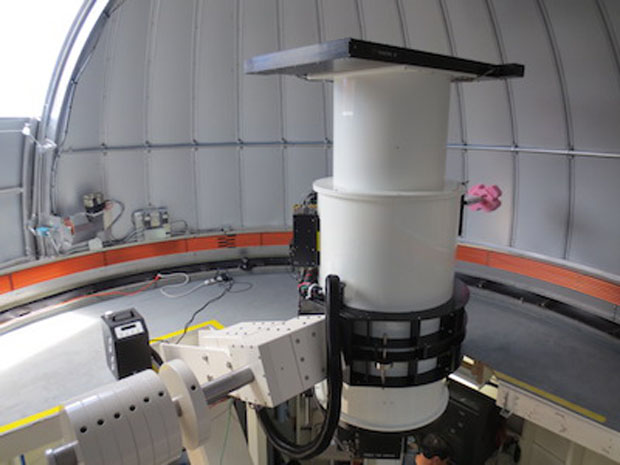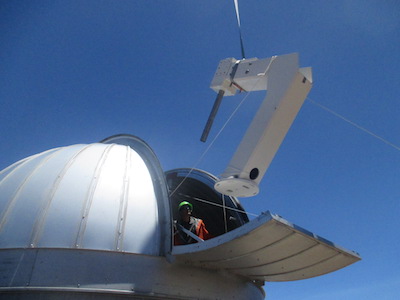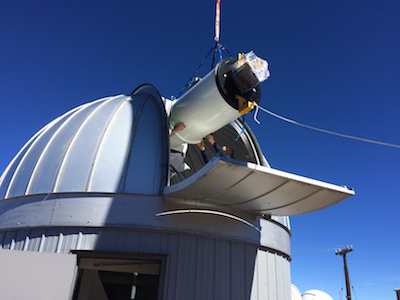
Asteroid Impact Early-Warning System's 1st Telescope Up and Running

The first Asteroid Terrestrial-impact Last Alert System telescope is now in operation on Haleakala – on the Hawaiian island of Maui.
Known as ATLAS, the telescope is part of an asteroid impact early-warning system being developed by the University of Hawaii and funded by NASA. Once completed in 2015, ATLAS will consist of two telescopes 100 miles (62 kilometers) apart that will automatically scan the whole sky several times every night looking for moving objects.
The promise of ATLAS is that it can provide one day's warning for a 30-kiloton "town killer," a week for a 5-megaton "city killer" and three weeks for a 100-megaton "county killer." [Photos: Potentially Dangerous Asteroids]

The telescope is located on Maui's Haleakala volcano and "is working well and producing useful images," according to a post on the ATLAS website. "We anticipate full resolution after some adjustments are made to the Schmidt corrector. The mount also performs well though it will require some fine-tuning to achieve ATLAS' stringent tracking specifications."
"All aspects of this whole system are very much under development right now. However, the existing system on Haleakala can survey the entire sky in a little more than one night, and we have begun accumulating images," ATLAS representatives added in a July 30 update.

ATLAS Telescope #2 is to be situated on Mauna Loa, a volcano located on the main island of Hawaii. This month, the ATLAS team was expected to meet with representatives from NASA and South Africa during the International Astronomical Union meeting in Honolulu. Discussions are to focus on the possibility of a third ATLAS unit in South Africa.
Leonard David has been reporting on the space industry for more than five decades. He is former director of research for the National Commission on Space and is co-author of Buzz Aldrin's 2013 book "Mission to Mars – My Vision for Space Exploration," published by National Geographic, with a new updated paperback released in May 2015. @Spacedotcom, Facebook and Google+. Story published on Space.com.
Get the Space.com Newsletter
Breaking space news, the latest updates on rocket launches, skywatching events and more!
Join our Space Forums to keep talking space on the latest missions, night sky and more! And if you have a news tip, correction or comment, let us know at: community@space.com.

Leonard David is an award-winning space journalist who has been reporting on space activities for more than 50 years. Currently writing as Space.com's Space Insider Columnist among his other projects, Leonard has authored numerous books on space exploration, Mars missions and more, with his latest being "Moon Rush: The New Space Race" published in 2019 by National Geographic. He also wrote "Mars: Our Future on the Red Planet" released in 2016 by National Geographic. Leonard has served as a correspondent for SpaceNews, Scientific American and Aerospace America for the AIAA. He has received many awards, including the first Ordway Award for Sustained Excellence in Spaceflight History in 2015 at the AAS Wernher von Braun Memorial Symposium. You can find out Leonard's latest project at his website and on Twitter.









